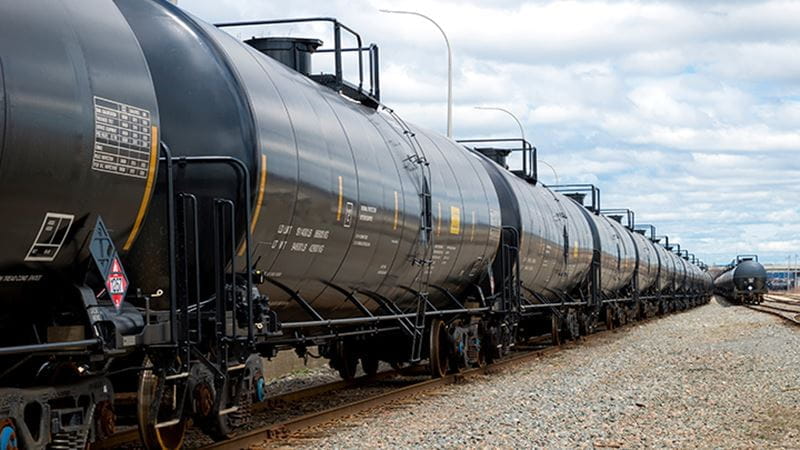Reducing dangerous leaks

art of a century, while reducing leaks of hazardous materials.
Almost every day in the US and Canada, there are instances of railroad tank cars spilling or leaking hazardous materials.
Spillages of hazardous material in transit are known in the industry as “non-accidental releases (NARs)” because they were not the result of a derailment or collision. Such spillages are usually caused by improperly secured or defective valves, fittings, and tank shells, according to the Association of American Railroads. There were 363 NARs from tank cars in 2019, according to the group’s most recent available data.
It’s a problem that Union Tank Car Company (UTLX), a railroad tank car leasing, manufacturing and repair company, set out to solve several years ago. After numerous iterations engineers came up with a newly designed 3-Bolt Manway Cover. The new cover has a simpler torque pattern relative to more common6 and 8-bolt designs, however the most important element is a unique seal, designed by UTLX in collaboration with Trelleborg.
“The design uses a spring energized elastomer seal that allows for the internal tank car pressure to help seal the manway, similar to old fashioned pressure cookers,” says Joe Perez, Vice President of Fleet Engineering at UTLX. “It is the first of its kind in our industry.”
The design of hinged and bolted manway covers has remained largely unchanged throughout the century, yet has always been among the top-ranking sources of leaks. According to Perez, the industry takes precautions in testing and approval due to the risks of rolling out premature modifications, which means that design changes take time. UTLX maintained their focus over the years to evolve their concept and deliver an acceptable solution for the good of the tank car shipping community.
The design team, led by Dan Schmidt, Fleet Engineering Project Engineer at UTLX, simulated various design combinations using finite element analysis (FEA),
a computerized simulation that predicts how products react to forces, including heat, pressure and fluid flow.
“Initially we sought to incorporate lessons learned from prior UTLX design concepts and prototypes, including means to reduce complexity by using fewer than eight bolts, adding a metal-to-metal contact in the assembly between the manway cover and tank car nozzle, and exploring alternative sealing options beyond the standard flat gasket,” said Schmidt. “Central to these improvements was mitigating the primary cause of manway cover NARs, which was loose (or undertorqued) bolts.”
Reducing the number of bolts from eight to three simplifies the bolt torque pattern, improving functional and operational efficiency, and helps prevent the under-torquing of bolts and the over-stressing or crushing of the gasket.
So far, the new design has been successful. Regulatory approval requirements include pressurization of the seal to 1.25× that required by regulations for a duration of ten
minutes without evidence of leakage or stress. The 3-Bolt Manway Cover passed that test, and has now been approved for a two-year service trial, under which the product was operated in use on a select group of cars.
“When you’re trying to bring in innovative ideas, right off the bat you’re running with something that’s going to take you a minimum of two years just to prove it,” concludes Perez. “But in the long run we want this to become our standard design with it installed on a good proportion of our 100,000 tank cars, and we think many others will benefit from it, too. We’re bringing forward a new innovation that will help reduce the industrywide issue of NARs.”
UTLX expects that the new 3-Bolt Manway Cover will be generally available to the rail industry in 2024.
This is an article has been reproduced from Trelleborg's T-Time magazine. To download the latest edition, go to: www.trelleborg.com/t-time